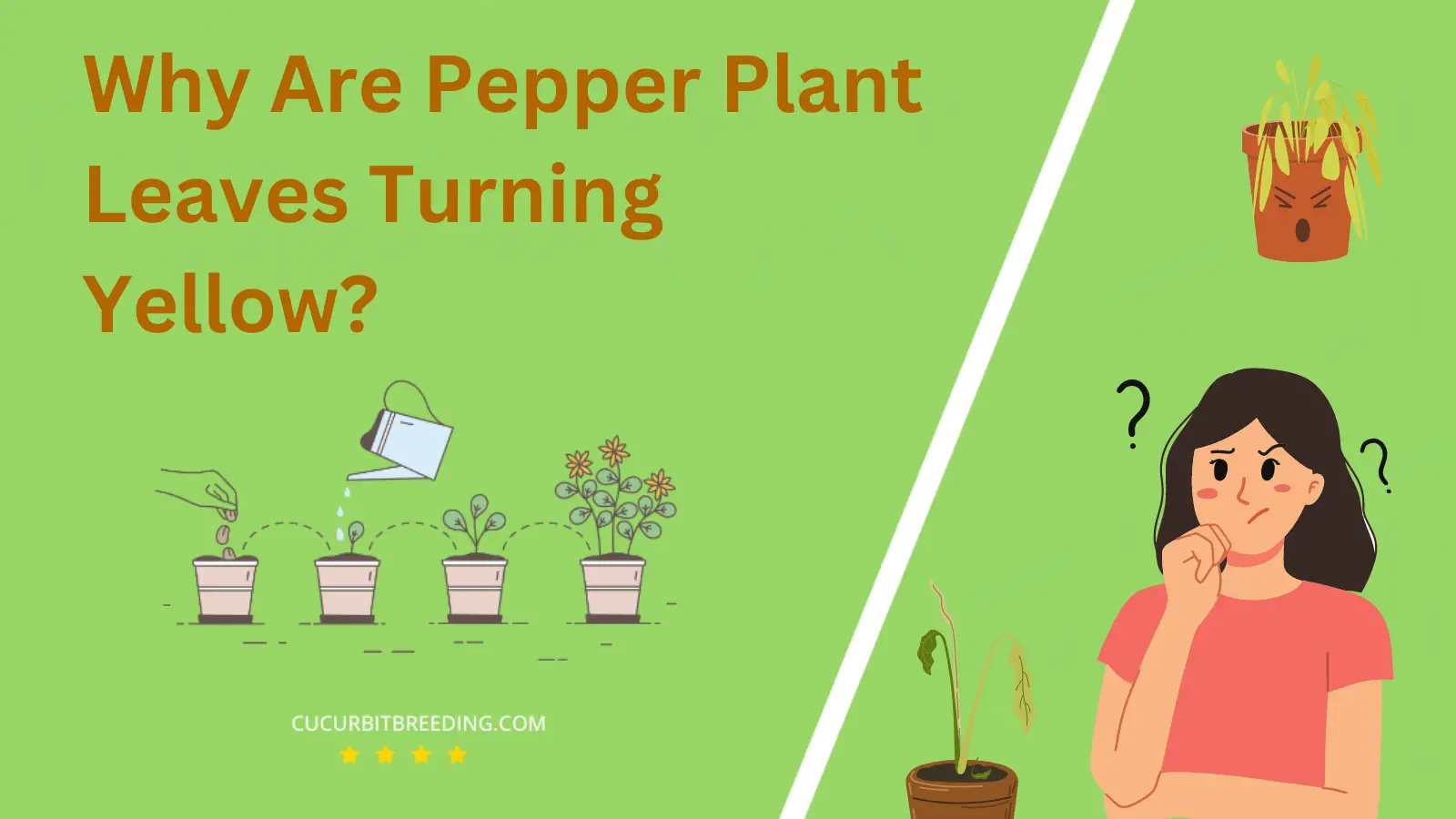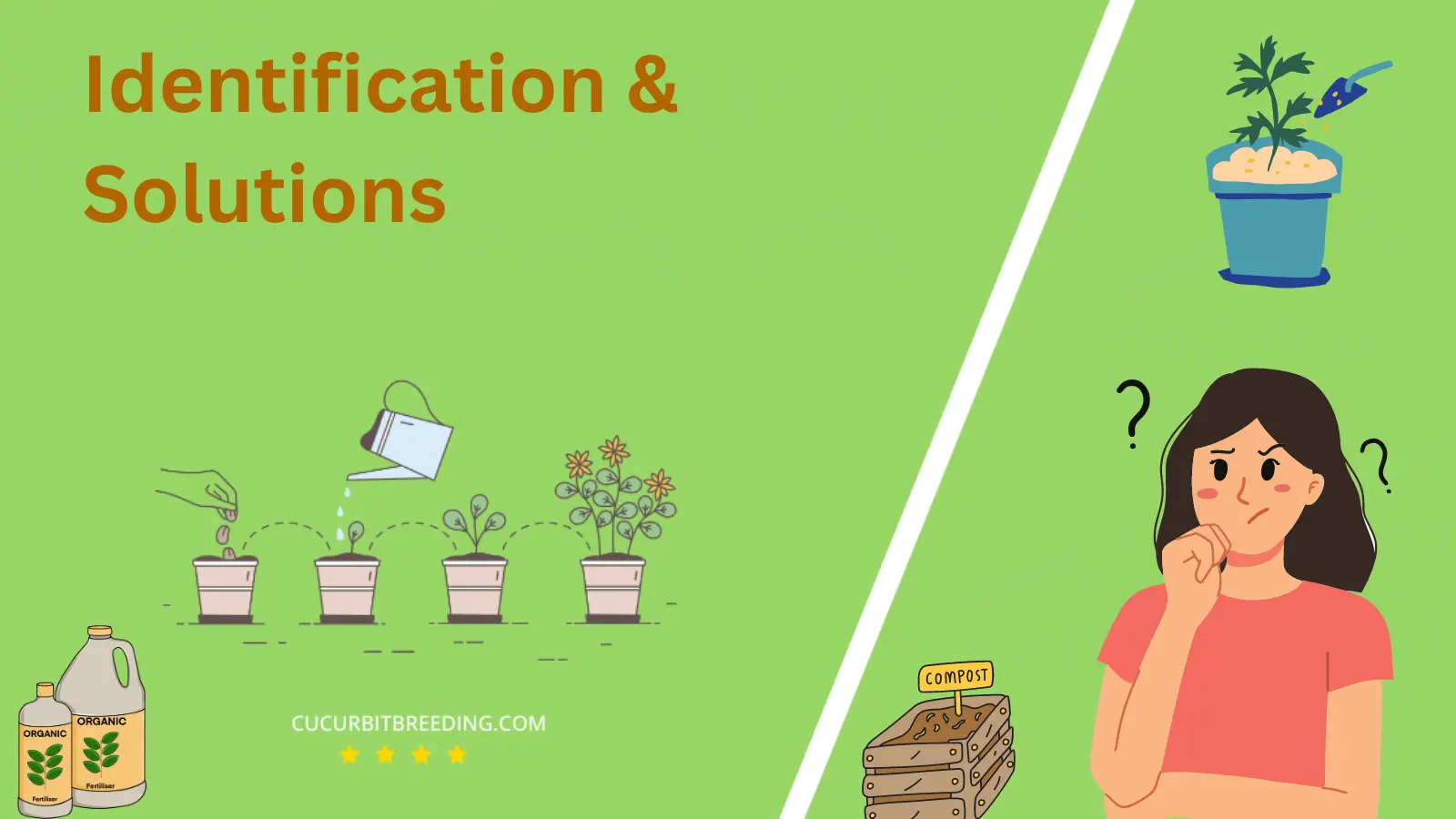
If you’ve been keen on observing your garden, you might have noticed something odd. Pepper plant leaves turning yellow can hint towards an underlying issue that needs your attention. It’s a common phenomenon but one that’s bound to raise questions.
Is it a disease? Is it due to imbalance nutrients? Rather than jumping to dire conclusions, let’s explore the different reasons that might bring about this color transition.
Why Are Pepper Plant Leaves Turning Yellow?
1. Nutrient deficiencies
| Description | can cause chlorophyll breakdown, leading to yellowing of pepper plant leaves. |
|---|---|
| Solution | Ensure proper nutrient balance in soil and provide appropriate fertilizer to address yellowing pepper plant leaves. |
Yellowing leaves on pepper plants can frequently result from a deficiency in essential nutrients. This condition is known as chlorosis, which indicates that the plant is not producing sufficient chlorophyll. Without enough chlorophyll, the leaves of your pepper plant cannot photosynthesize effectively, leading to a yellow discoloration. Common nutrient deficiencies that cause yellow leaves include a lack of nitrogen, potassium, or magnesium.
To resolve this issue, start by improving the soil condition. Apply a balanced, slow-release fertilizer that contains the above-mentioned essential nutrients. Nitrogen, in particular, helps plant tissues remain green, while potassium helps in efficient water utilization. Magnesium is a critical component of the chlorophyll molecule, and its deficiency can lead to yellowing. Furthermore, ensure that the plant is adequately watered but not waterlogged, as overwatering can result in nutrient loss through leaching. Consider a soil test to determine exactly which nutrients are missing from your soil and adjust your fertilization strategy accordingly.
Regular monitoring for early signs of nutrient deficiency can prevent leaf yellowing. The plant’s health and productivity can be maintained by ensuring the availability of these critical nutrients through balanced and regular fertilizing.
Note: In the process of diagnosing nutrient deficiency, it’s important not to rule out other possible causes like disease, pests, or environmental stress, that can also result in yellowing leaves on pepper plants. If yellowing persists after adjusting for nutrients, it may be necessary to seek further advice.
2. Overwatering
| Description | Causes excess water in the roots, leading to nutrient deficiency and chlorophyll breakdown. |
|---|---|
| Solution | Reduce watering frequency and allow the soil to dry out between waterings to prevent yellowing leaves. |
Overwatering is a common cause of yellowing leaves in pepper plants. **Overwatering results in waterlogging** of the soil, causing roots to suffocate and rot. The plants are unable to take up the necessary nutrients, leading to chlorosis (yellowing of the leaves).
To rectify this issue, **adopt a regulated watering routine**. Ensure that you water your pepper plants when the top inch of soil is dry, not on a stringent schedule. Avoid watering in the evening as it can encourage the growth of fungal diseases.
For plants that are already overwatered, **reduce watering immediately and consider repotting** the plant into fresh, well-draining soil. You may also need to trim off the affected leaves or treat the plant with fungicide if root rot has set in.
Taking steps like these will help to prevent leaf yellowing due to overwatering and keep your pepper plants healthy.
3. Underwatering
| Description | Insufficient water supply disrupts chlorophyll production, causing pepper plant leaves to turn yellow. |
|---|---|
| Solution | Increase watering to ensure adequate moisture for the pepper plant’s leaves and prevent yellowing. |
Pepper plant leaves turning yellow could be a result of underwatering. When a plant doesn’t receive enough water, its leaves start to turn yellow because the lack of water stresses the plant and hinders its ability to process chlorophyll, which is what keeps the leaves green. In addition, lack of water also slows down photosynthesis, thereby robbing the plant of vital nutrients.
The solution is to ensure that the plant is receiving enough water. However, the amount of water required can depend on various factors such as the size of the plant, its stage of growth, and the temperature and humidity of the surrounding environment. The top few inches of the soil should be moist but not waterlogged. Watering should be done thoroughly, making sure water drains out of the pot bottom. Also, consider the use of self-watering systems if regular watering cannot be maintained.
4. Pest infestation
| Description | Insufficient water supply disrupts chlorophyll production, causing pepper plant leaves to turn yellow. |
|---|---|
| Solution | Increase watering to ensure adequate moisture for the pepper plant’s leaves and prevent yellowing. |
Yellow leaves on pepper plants could well be a sign of pest infestation. A large number of pests, such as aphids, whiteflies, or spider mites, are attracted to pepper plants and can lead to yellowing of the leaves. These pests suck the sap from the plants, damaging the plant tissue and interrupting the plant’s ability to conduct photosynthesis effectively, which leads to the change in color.
To combat this issue, it is important to identify the pests early and act promptly. Regular inspection of plants for tell-tale signs like small insects, eggs underneath the leaves, and sticky or discolored leaves helps to identify an infestation. Once identified, you can use organic pesticides or insecticidal soaps to control these pests. Furthermore, introducing beneficial insects, such as ladybugs, which feed on aphids, can offer a natural solution to the pest problem. Regular pruning of the affected leaves is also crucial to prevent the spread of the infestation.

5. Disease or fungal infection
| Description | Increase watering to ensure adequate moisture for the pepper plant’s leaves and prevent yellowing. |
|---|---|
| Solution | Apply fungicide and ensure proper drainage to prevent disease or fungal infection causing yellowing leaves. |
Pepper plant leaves often turn yellow due to disease or fungal infection. When a plant is diseased or infected by a fungus, its ability to perform photosynthesis can be hampered, leading to a yellowing of leaves. Fungal diseases like leaf spot can cause yellow spots, while bacterial diseases like bacterial leaf spot cause a more uniform yellowing.
The best solution to a disease or fungal infection is to prevent it from happening at all. Maintain good plant hygiene by removing any fallen leaves and debris around the pepper plants, as these can be breeding grounds for disease and fungi.
Use of fungicides and bactericidal sprays can also be effective in dealing with these problems. If conditions persist, it may be necessary to remove and safely dispose of the infected plants to protect the rest of the garden. In the future, selecting disease-resistant varieties of pepper plants can help avoid such issues.
6. Environmental stress (e.g., extreme temperatures, excessive sunlight)
| Description | can disrupt chlorophyll production, causing leaves to turn yellow. |
|---|---|
| Solution | Provide shade or adjust temperature to mitigate environmental stress causing yellowing of pepper plant leaves. |
Extreme temperatures and excessive sunlight, both forms of environmental stress, can cause pepper plant leaves to turn yellow. This change in leaf color signifies the plant’s struggle with the conditions it’s experiencing. Extreme temperatures, whether too hot or too cold, can compromise the plant’s regular processes, while excessive sunlight can result in sunscald, damaging the plant’s tissue and leading to a yellow hue.
To counter these issues, ensure that your pepper plants are not exposed to drastic temperature changes. They prefer temperatures ranging from 70 to 85 degrees Fahrenheit. Also, too much direct sunlight can be harmful. Although pepper plants need lots of light, during very hot weather or in regions with strong sun intensity, it’s better to provide some shade during peak sun hours. Lastly, remember to keep soil evenly moist but not soggy as extreme temperatures and strong sun can cause it to dry out quickly, adding another stress factor to the plant.
7. Aging or natural leaf yellowing
| Description | is caused by the breakdown of chlorophyll and the cessation of photosynthesis. |
|---|---|
| Solution | Increase nutrient uptake by adjusting soil pH and adding organic fertilizers to promote healthy leaf growth. |
One common reason for yellowing leaves on pepper plants could be a result of water stress. Water stress happens when the plant either gets too much or too little water. When a pepper plant is waterlogged, its roots cannot take up necessary oxygen, leading to yellowing leaves. Similarly, under-watering or drought can shock the plant, causing leaves to yellow as the plant attempts to conserve water.
To fix this issue, it is important to maintain a consistent watering schedule. The soil should be kept moist but not waterlogged. Ensure you have well-draining soil and containers so water does not sit at the root. If you are neglecting watering, adjust your routine to regularly provide your plants with water but be careful not to overcompensate and provide too much. Observing how your plants respond will allow you to adjust your watering regimen accordingly.